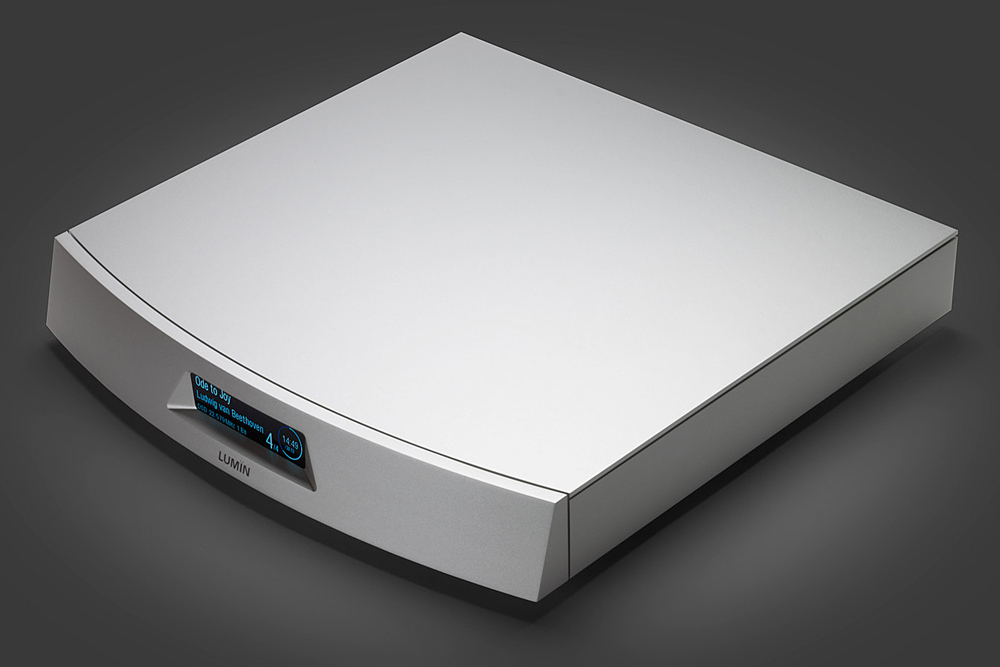Lumin is an offshoot of Pixel Magic Systems Ltd of Hong Kong, a privately-held electronics equipment manufacturer founded in 2003 to create home theatre and home audio products. Lumin was created in 2013 to design and manufacture network players, network transports, network amplifiers and network music servers. It has been quite prolific and has launched many products that, without fail, have been accepted very quickly by audio enthusiasts around the world. People talk of Lumin whenever they talk of high-end music servers/players. The product in focus this time is the brand new Lumin U2 Network Transport.
What’s In the Box
The U2 is effectively a network music server. It doesn’t offer a DAC or an internal SSD for storing your own music – all the music it renders comes from external sources such as an external USB drive (or flash drive), a NAS drive and/or services such as Qobuz and Tidal, which is likely why Lumin calls it a network transport. Fair enough.
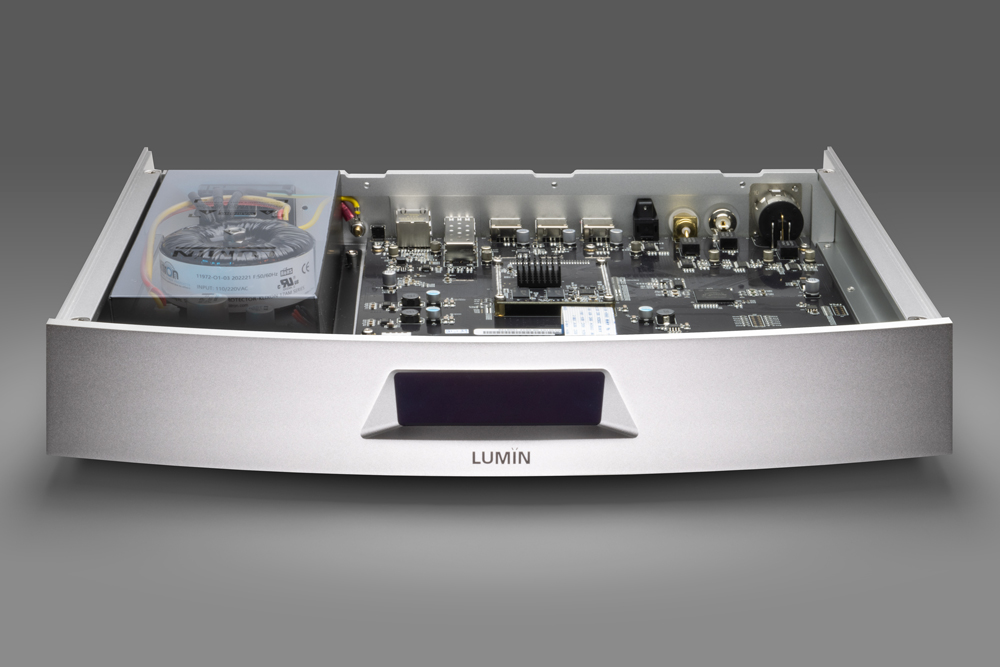
The U2 is the first Lumin transport to use a new all-in-one chassis. It’s a spiffy looking low-profile chassis, made of solid aluminium panels, that offers superior rigidity and shielding. It feels very much like it’s milled from a solid billet with a fine surface akin to the more up-market Lumin P1. The extra-large toroidal-based linear power supply is integrated into the chassis. I ran the U2 for three weeks 24/7 and it remained cool to the touch – surprising given the generous power supply. It also has the dual network connections from the P1 with a built-in network switch, and also a new SFP fibre network connection that provides better isolation from network noise. It has a new dedicated low-noise “direct-coupled” USB output (with no buffering), plus two additional USB ports. Plus, there are low-phase-noise crystal clock oscillators.
It’s capable of DSD512 and PCM768 playback at 16- to 32-bits. A new generation processor provides more power for intensive tasks such as resampling. It can up/down sample to DSD256. It supports FLAC, ALAC, WAV, AIFF, DSD, MP3 and MQA file formats. It supports DoP (DSD over PCM). It has native support for Qobuz, Tidal, Tidal Connect, Spotify, MQA and TuneIn radio. It’s also AirPlay compatible. It is Roon Ready, meaning you can use the U2 to render files over the network from a Roon core somewhere via the Roon Advanced Audio Transport (RAAT).
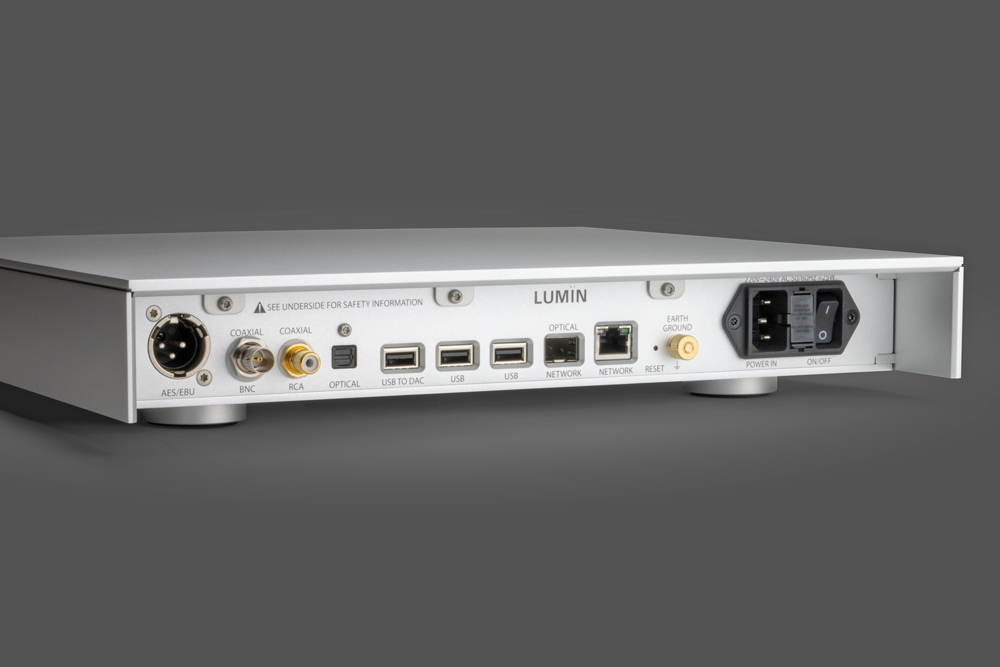
It has two USB input connectors plus the already mentioned “direct-coupled” USB output connector. It also has optical, RCA coax, RCA BNC and AES-EBU output connectors. It’s 350mm wide, 350mm deep, 60.5mm high. It weighs 6 kgs. The U2 is available in black anodised aluminium or raw anodised aluminium. My review sample looked stunning in the raw (i.e. silver) finish.
All Lumin products now sport the award winning Leedh Processor volume control free of charge. The U2 is no exception. Leedh Processing is an innovation of Gilles Millot of the French company Acoustical Beauty. The Leedh processing control “modifies the digital signal amplitude exactly without any changes to its shape and [is] free from any kind of information loss”. This may allow you to remove your preamp from your system, depending on your configuration. In the U2 you have the option of using the Leedh volume control or the normal volume control. You can easily switch between them while you play music – you will hear the difference. I used the Leedh volume control for all my listening.
The Lumin app (for iOS and Android tablets) is used to control all aspects of the U2. The U2 doesn’t come with a physical remote control. The app is quite good, although I did run into a couple of minor bugs, fortunately none presented any real problem, and I’m sure Lumin will fix them promptly. The app allows you to precisely tailor the U2 exactly the way you’d like it. That includes: setting up to single-click or double-click to do various functions; the UI presentation itself, i.e., themes, shadows, grouping, playlist numbering; front panel display and mode. More importantly, you can specify how to re-sample various sampling rates should you wish to do so (or need to due to compatibility issues with your DAC), and you can turn on/off the Leedh volume processing control. The app menu system is intuitive and well laid out with consistent colours and contrasts. It doesn’t take very long to find your way around.
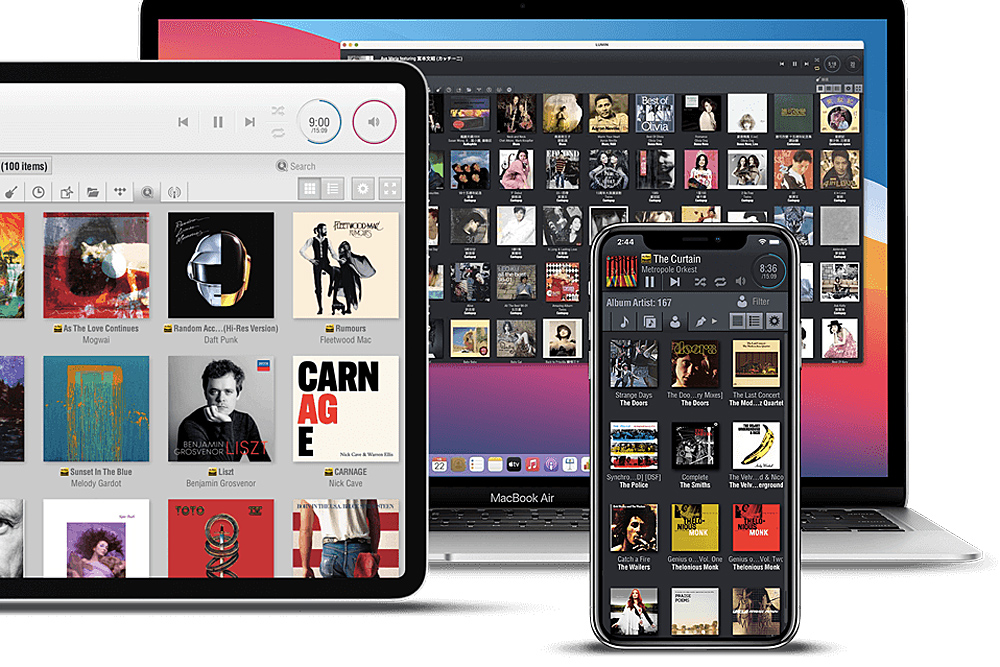
I did however, find the display window on the U2 to be smaller than I would like. But in all fairness, I cannot see even bigger displays properly because I sit about four metres away from it. In addition, many of the Lumin’s competitors eschew a display altogether. Fortunately, the comprehensive coverage in the app shows everything you might need to know.
Illuminate Me
When I first received the brand new Lumin U2, I let it warm up for three days. Of course, I snuck in a quick listen once or twice while it warmed up, but nothing critical. After the initial warmup, I gave it a cursory first listen and was surprised and disappointed in the sound quality. I found there was considerably less separation between voices and instruments, only average dimensionality and a slight veiling. There was less substance to the voices, less body, and transients seemed slightly softened, cymbals sounded less like wood on metal. Of course, this was all compared to what I was used to through my own reference music server. In itself, the sound was not bad, it was just not what I prefer or expected. I really did believe the U2 could do better, so I thought about what I might have done wrong.
Then… and an advance warning… those that dislike upsampling should now skip to the next paragraph. I soon realized that my music server reference was set to 4FS while the default setting for the U2 was NOS (non-oversampling). Once I changed the settings in the U2 to 4FS, it sounded considerably better. In fact, it sounded like a different transport altogether. I should add that the resampling options in the U2 are very comprehensive. You can specify upsample and downsample criteria for each sample rate for DSD and PCM. Or if you wish, you can leave them set to ‘Native’ in which case there are no sample rate conversions. And some people will no doubt prefer to do just that, which is absolutely fine. But to my ears and in my system, the NOS settings just didn’t sound ‘right’. I applaud Lumin for giving the listener so much control to do this – it can then satisfy everyone.
A matter of degrees
I quickly realised that the Lumin U2 is a lovely player, excellent in fact at its price point. Sure, you can always find better sound quality which is why Lumin themselves have the more high-end P1 and X1. But the P1 is twice the price of the U2, and the X1 even more. As well, my reference music server is more than twice the price of the U2, so naturally I expected it to perform better, and it did. Consequently, I consciously tried to ensure that I used knowledge of what those improvements are only to tell me what is possible, rather than always compare my music server to the U2. That wouldn’t be a fair fight.
Before I started any listening, I checked the levels to ensure that the U2 and my own reference music server were closely matched in SPLs. That way, on those occasions when I did switch back and forth between sources with a test track, I could be sure I got an accurate impression of any differences, and a good idea of what sounded ‘right’ regardless of the source.
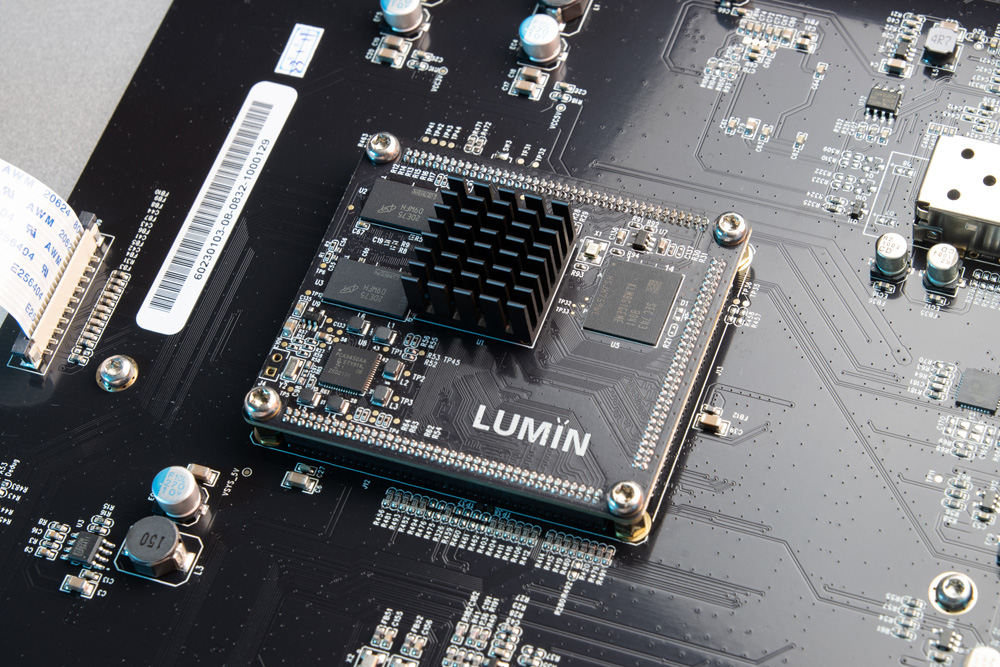
Lastly… a certain output on transports/servers will often sound better than other outputs. In the case of the U2 that output may well be the direct-coupled USB, I don’t know. However, I don’t use USB in my system – the output from the U2 (and my music server) into my Trinnov Amethyst (see associated equipment at the end) was AES-EBU via a high-quality cable.
I admit I don’t have exhaustive experience with transports/servers at the price point of the U2, but I doubt many, if any, would sound better than the U2. I believe it’s a very accomplished transport.
After 100 hours
My first critical listening was when there were about 100 hours on the U2. Of course, many products require considerably more time to run in before they sound their best. After a bit of listening, I concluded that the Lumin was one such product. Listening to the title track on Chris Jones’ album Roadhouses and Automobiles (44.1/24-bit), the U2 had a sharp edge on the guitar, it emphasised the transients with somewhat less sustain. It had less body than I would consider natural – I felt that it was likely due to a slightly reticent midrange. The bass was good, quite full but the treble was a bit tizzy, i.e., too prominent. The soundstage was smaller than I prefer and somewhat closed in – it was more or less level with the front plane of the speakers. However, the birdsong at the end of track was very clear. It seemed likely that the Lumin U2 offered a high degree of resolution. In fairness, it was too early to be sure of any attributes of the sound. I did strongly suspect it needed more time to settle down. Given the low hours on it, I thought it was a good start.
To be sure of my findings so far, I decided to listen to a few more tracks. I listened to “The Touch of Your Lips” on the album Ben Webster Meets Oscar Peterson (96/24). This offered up a slightly more pleasant, rich sound. It also sounded more open with a bigger soundstage. Bass was good, but upper midrange had less body and treble had too much sizzle. Overall, it lacked a relaxed smooth presentation.
I also listened to “Shooting Shadows” on The Milk Carton Kids album Monterey (96/24). This is a great track to hear dimensionality and placement within the soundstage – both guitars and voices cast a distinct and unwavering image in the soundstage. Although the placement was pretty good, spatially it didn’t sound as open and free flowing as I’d hoped. Yes… more hours are needed.
And then 200 hours
After 200 hours, I returned to the Chris Jones track. It was beginning to sound better. There was still an edge to the guitar with less body overall. And oddly, it didn’t quite offer up that sound of high-strung fresh guitar strings (maybe even more time needed?). Perhaps it was that reticence in the upper midrange. Spatially it seemed to be holding back on the depth and illumination into the soundstage – it needed more bloom, texture, colour. It had a more “staged” feel rather than a holographic natural feel with clear precise imaging. The level of detail was good, although the music it transported didn’t seem to really gel yet. Still, it sounded ‘right’ enough that if the U2 was your own dedicated transport/player and you listened to it every day, then you’d hear it as being ‘right’. It’s all relative to something.
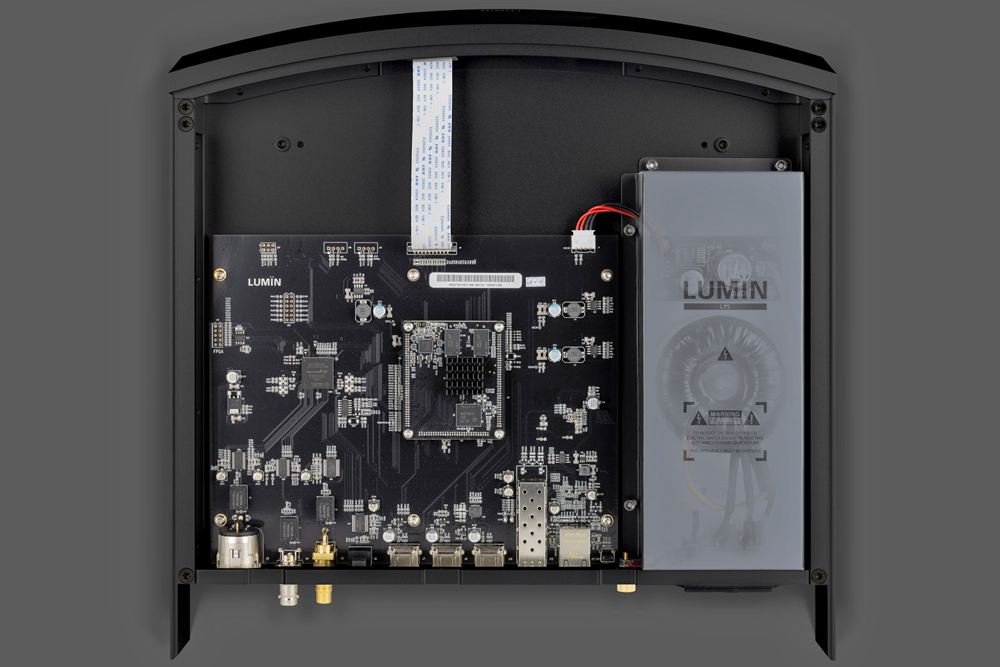
Listening again to the aforementioned Ben/Oscar track, it sounded like the cymbals had slightly less sizzle and more body, and the midrange had filled out a bit as well. It still lacked a dimensional feel – a soundstage with instruments in space interacting with one another. It was still more 2D than holographic 3D.
I decided to let it run-in for much longer before I did any further critical listening. When not listening to it, I always let it run 24/7 in the background on TuneIn radio, various local music files and Qobuz.
Finally, 350 hours
Things took a notable turn for the better at 350+ hours. I had returned to the Chris Jones track. The bass was still full but now there was a bit more clarity. Treble had also improved but was still a bit too prominent for my liking. Separation was better but it still lacked clarity into the corners of the soundstage. To my ears, it still needed a more holographic, natural, energy-filled and free-flowing sound.
I was then fairly certain that what I was hearing was how Lumin had voiced it – how they wanted it to sound. You can do only so much at lower price-points – everything is a compromise in audio.
I then listened to the Ben/Oscar track again. It sounded somewhat more relaxed now, but still had less illumination and air, less dimensionality than what I had hoped to hear. It was more open than before, but still, I felt like it needed to open up more.
Listening to The Milk Carton Kids track again, it too now sounded more relaxed. Spatiality had improved from 200 hours, and body and bloom were somewhat better. The guitars had also settled down somewhat, but still emphasised the transients with a slight lack of tonal sustain.
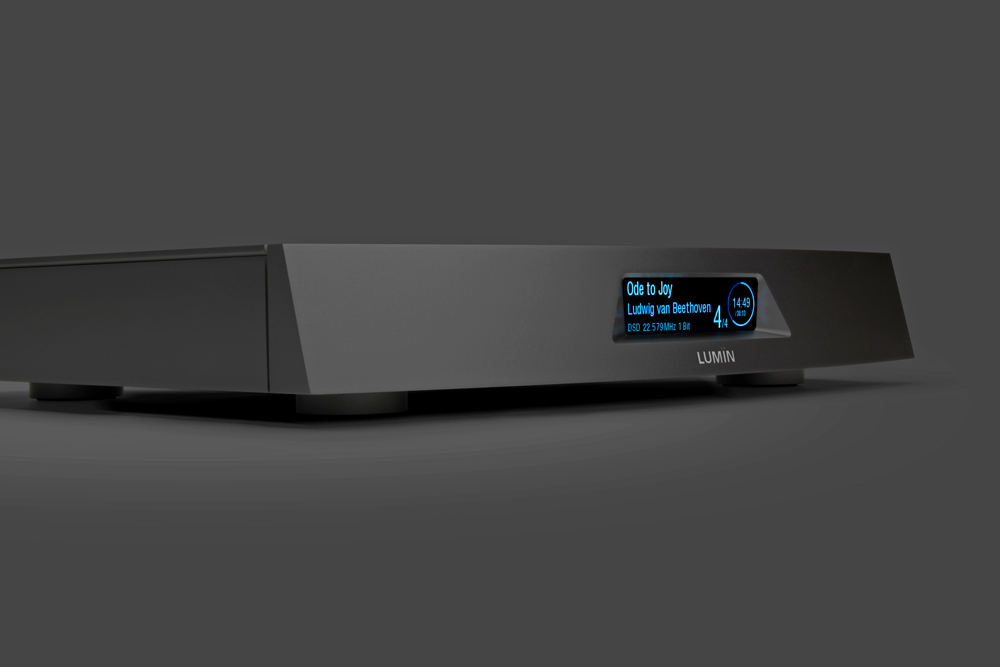
When doing Wilson Audio speaker setups, Peter McGrath of Wilson Audio fame uses an old Christy Moore track titled “So Do I” from the album This is the Day. It has a gentle sweet flow with good clarity and a soft, sweet synthesized background sound. Shakers can be heard left centre behind the vocals, with guitars quietly carrying the theme. I’m not certain what McGrath might be listening for, but I’ve also found it helpful. The U2 presents the track in a lovely manner.
The Buddaheads track titled “Crawlin’ Moon” from their album Howlin’ Moon sounded very good. This track has a great repetitive bass riff that needs power and fullness to sound truly menacing – the generous bass of the U2 really suited this track, although I felt it was holding back the dynamic contrasts a bit in the mid-bass power range. In the midrange, the U2 sounded a bit busy, less smooth. The slightly reticent midrange might also account for why the kickdrum lacked some oomph. The U2 might not be your best choice if your diet is lots of heavy hard rock or industrial metal. Soft rock, jazz, folk and classical is its forte – it all sounded good through the U2.
Ray LaMontagne on his album Monovision (96/24) is a great return to form. The album was played and recorded entirely by LaMontagne during Covid, and has a somewhat wholesome, home-grown sound. For whatever reason, the U2 was in its element with this album. The track “Highway to the Sun” sounded quite open and transparent.
Conclusion
Lumin has matured into a strong competitor since its founding in 2013. The new Lumin U2 is a very accomplished network transport. It looks high-end while exhibiting a real sense of class. Its control app is great and its overall sound is very good indeed. It’s generous in the bass and treble, with the upper midrange slightly recessed, a quality which might suit many an overzealous system.
It does need at least 300+ hours to sound its best. If you want to take one home to trial in your system, then make sure it has the requisite number of hours on it. Otherwise, you won’t really be hearing how good it really is.

I believe the U2 is designed and built to be a mid-tier high-end transport. If you want to hear everything on a recording in a more illuminated and vibrant spatial soundscape, then perhaps you need to look a bit higher up the Lumin product line. That is not meant to be taken as “damning with faint praise”. It’s just the reality of what compromises must be introduced at different price points. It’s inescapable, it’s all a matter of degrees.
The Lumin U2 is a truly wonderful player. I doubt there are many if any transports out there at a comparable price that would best it. It needs to be on your short list when you go listening for that new transport. Highly recommended.
… Tom Waters
www.soundstageaustralia.com
Associated Equipment
- Speakers — Bowers & Wilkins 801 D4
- Amplifier — Gryphon Audio Designs Antileon EVO
- Preamplifier — Trinnov Audio Amethyst
- Sources — Grimm Audio MU1 Music Server, Weiss Medus Reference DAC
- Processor — Trinnov Audio Amethyst
- Cables — ZenSati #1 interconnects and #2 speaker cables, ANTICABLES Level 5 Signature jumper wires, LA Sound AES-EBU, Nordost Tyr 2 AES-EBU, AudioQuest Vodka Ethernet cables, Trinity (DE) power cords, Synergistic Research Hologram A and D power cords, LA Sound Titan power cord, ANTICABLES Level 3 Reference power cords (into and out of Nordost QX4 line purifier), Nordost Purple Flare (Figure 8) power cord (for router)
- Audio Rack — Schroeders and Schroeders, Symposium Ultra custom-made amplifier stands
- Miscellaneous — Nordost Quantum QX4 line purifier, Nordost Quantum QB8 power distribution, Nordost Quantum QV2 AC line harmonizers, Nordost Quantum QK1 AC Enhancer, three dedicated 20 amp power lines, Symposium Rollerblock Jr isolation footers, Symposium shelves, Viablue UFO XL Absorbers, Vicoustics Super Bass Extreme traps, Vicoustics Cinema Round diffusers, Vicoustics Multifuser DC3 diffusers, Vicoustics Multifuser Wood MK2 diffusers, RealTraps bass traps
Lumin U2 Streaming Transport
Price: AU$7400
Australian Warranty: Two Years
Australian Distributor: Audio Magic
+61 3 9489 5122
www.audiomagic.com.au
Lumin Music/Pixel Magic Systems
Unit 603-607
IC Development Centre
No.6 Science Park West
Hong Kong Science Park
Hong Kong
www.luminmusic.com






